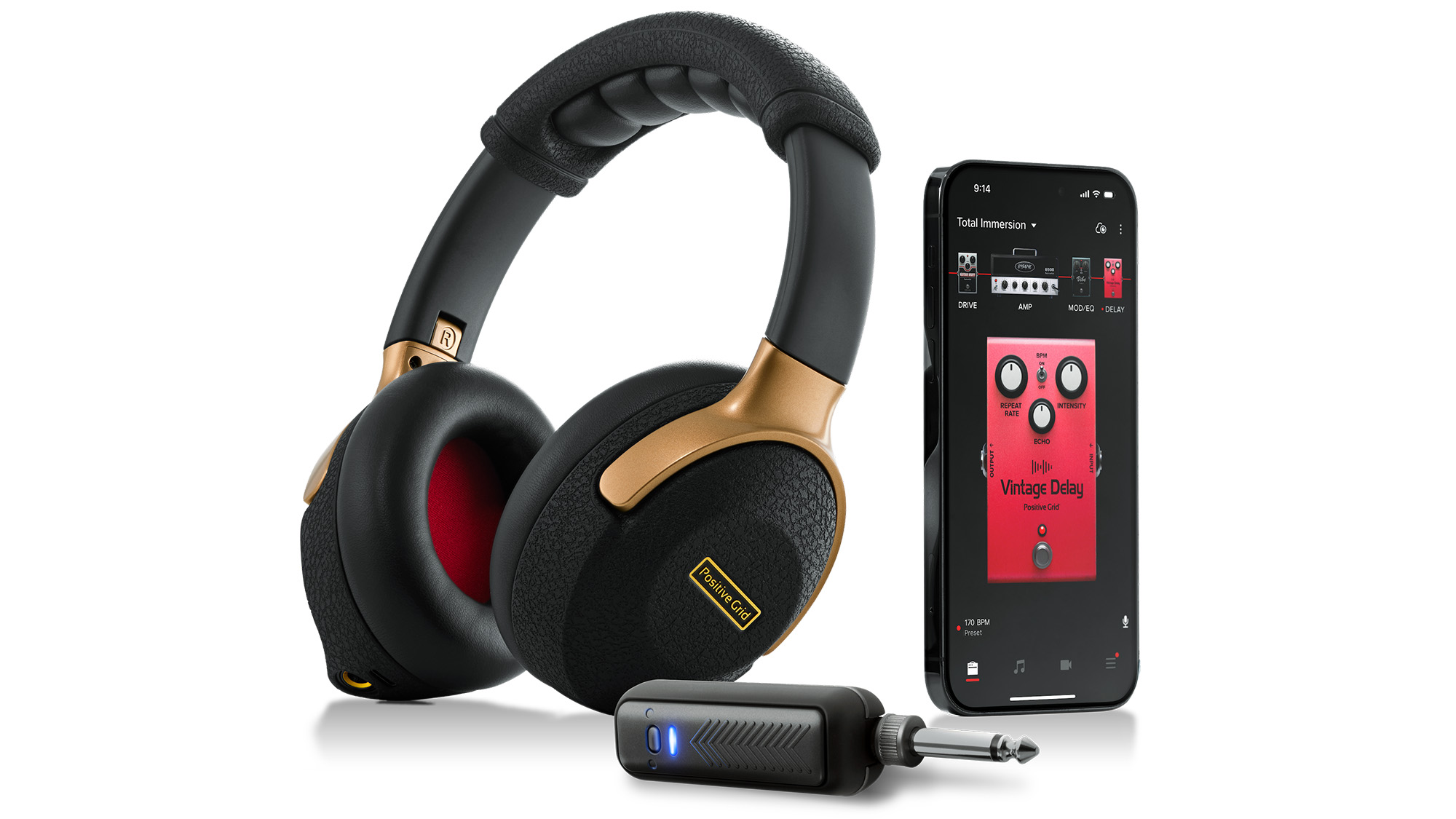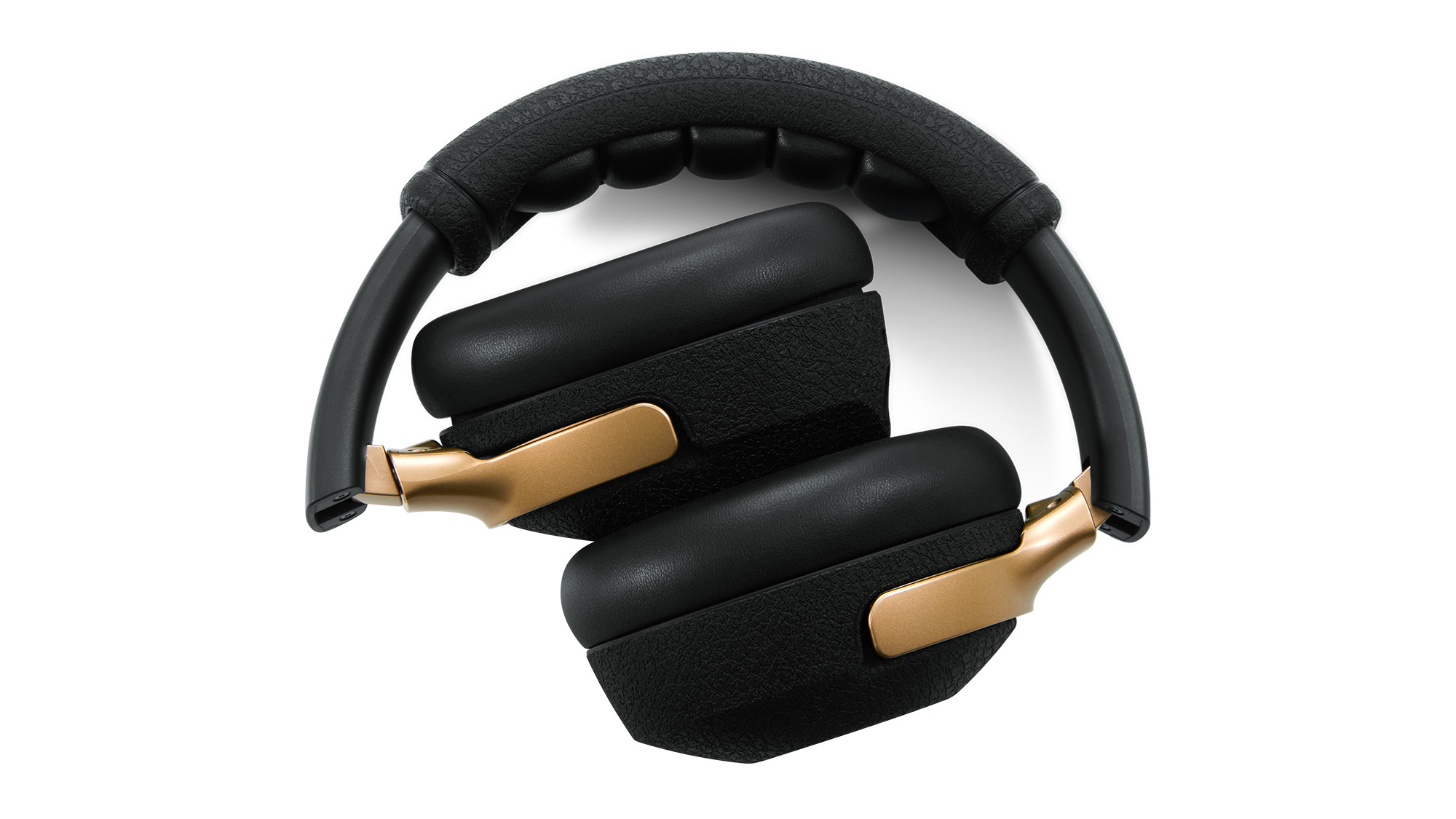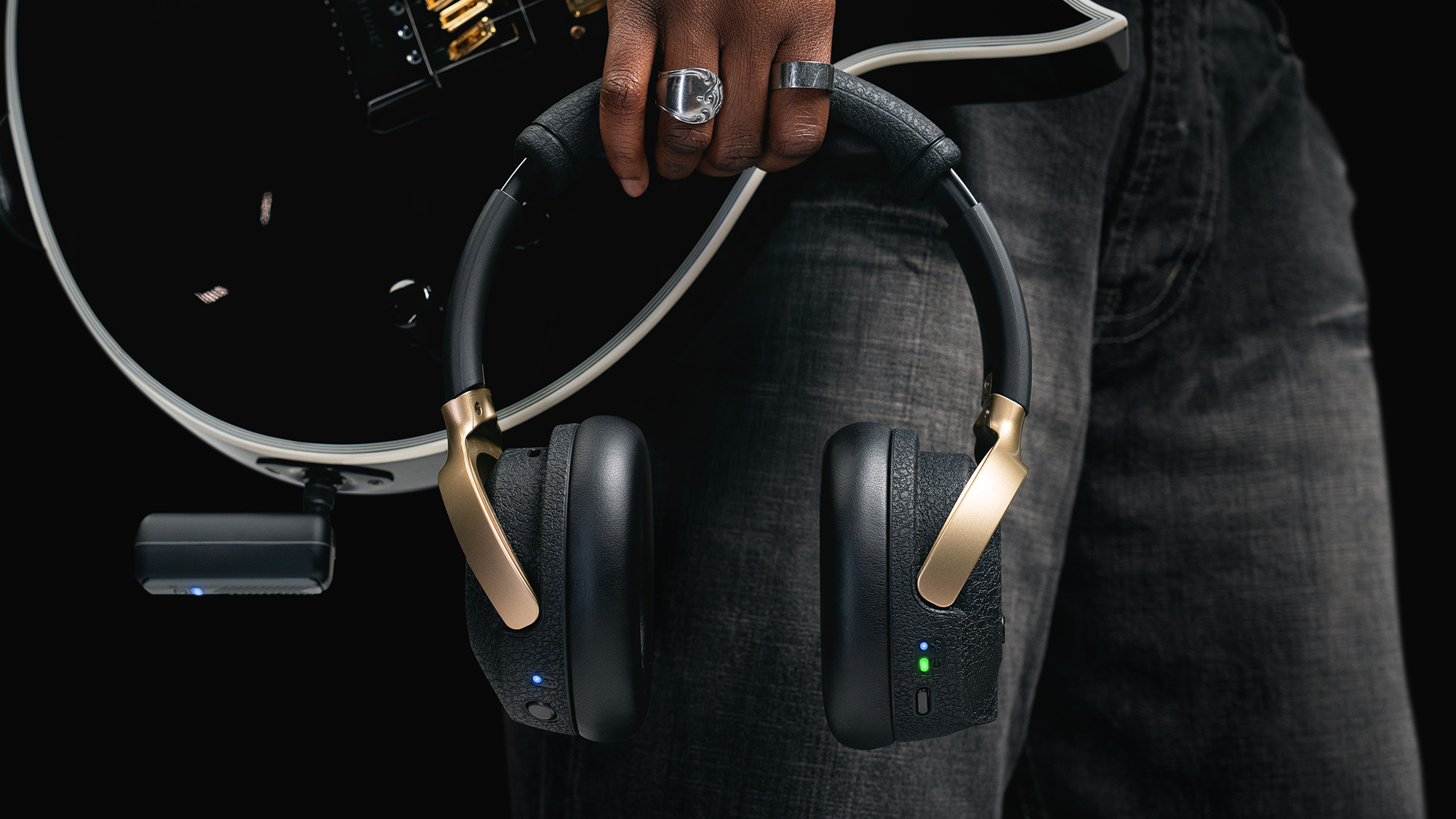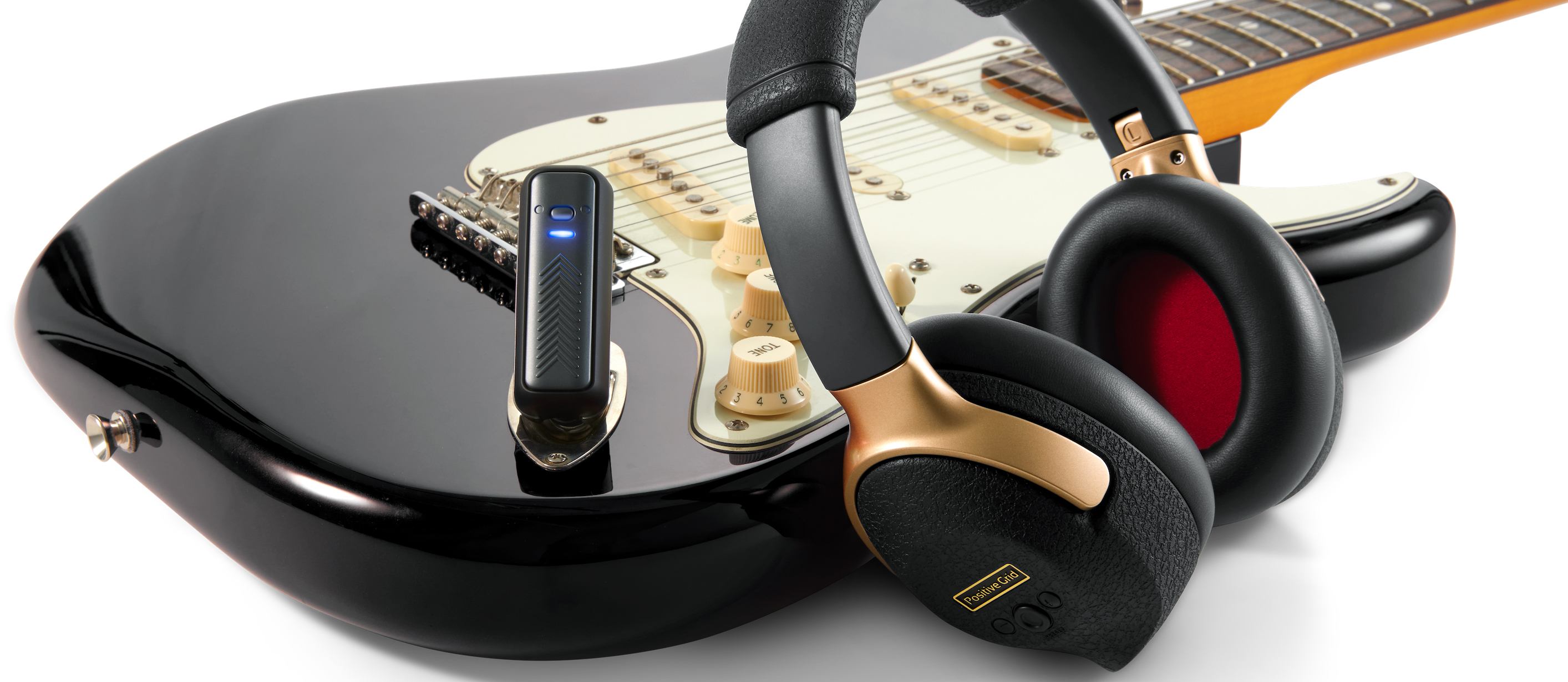GuitarPlayer Verdict
Well constructed and comfortable to wear even over long stretches, Spark Neo brought my favorite Spark App presets to life with more detail and nuance, and in privacy that was devoid of environmental noise. Far from sounding sterile, Spark's amps seemed alive and present, with a sense they were actually moving air.
Pros
- +
Great sound
- +
Excellent build and comfortable fit.
- +
AI features are both fun and useful
Cons
- -
No travel case
You can trust Guitar Player.
Positive Grid has become quite a force in guitar amplification over the past six years. Their innovative Spark smart amp debuted in early 2020 and brought a wealth of innovations to guitarists for home practice. Those included excellent stereo sound from a desktop amp, dozens of modeled amps and effects from Positive Grid’s award-winning BIAS FX line, Auto Chord Recognition to help you learn songs, and Smart Jam virtual jamming with drum and bass accompaniment. Spark did all this by working in tandem with the Spark app, which provides convenient access to the amp and effect settings, presets, chords and more, right on your phone.
Positive Grid has served up several iterations of Spark since then, including the smaller MINI Amp, the coat pocket–sized Spark Go, and Spark LIVE, a Guitar amp and PA all-in-one that's powerful enough for live performance. Last year, the original Spark got an overhaul with Spark 2, featuring a new speaker design, improved audio, a built-in looper, and AI features that let the Spark app serve up new preset options based on descriptions you give to it.
Now comes Spark Neo, which puts all those quality sounds, and nearly every one of those features, in a pair of wireless over-ear headphones that connect with the Spark app. The result is an immersive audio experience that delivers excellent clarity and detail you can’t get from headphones alone.
Neo includes a headphone set, as well as a wireless dongle that plugs into your electric or acoustic or bass and connects wirelessly to the headphones. The headphones are covered with the same textured tolex found on Spark’s amps, which has a pleasing, almost suede-like feel. The gold-tone metal fittings have an attractive satin finish, and generous pads for the ears and inside the top of the headband keep the phones comfortable to wear over long sessions. They look and feel well built, and while they’re not heavy, the headphone do have a bit of heft that tells me they can stand up to the wear and tear of daily use. The ear cups fold in, making them more compact for travel in a backpack or case.

The body of the dongle is roughly two and a half inches long. Its entire length with the 1/4 plug extended in about four inches, but the plug can be angled to position the dongle out of your way when it’s attached to your guitar. All in all, it’s an attractive package that, like the headphones, feels solid and durable.
The Neo headphones are designed to reproduce both guitar and bass frequencies. To that end, they feature full-range 40mm drivers, with specially designed acoustic chambers in the ear cups and passive tuning for precision frequency control and minimal distortion. While the phones aren’t noise cancelling, they do an excellent job of shutting out environmental noise thanks to the pads, damping materials, and other design elements. For added convenience, the outsides of the ear cups have controls for power, volume and preset selection on the right-side cup, and the wireless receiver on/off button on the left.
Both the phones and wireless dongle charge via USB-C (a braided USB-C cable is included). Expect about three and a half hours to get a full charge. Positive Grid says you can get roughly six hours of use on a full charge when using Neo with guitar, and eight hours use for music playback, all of which is consistent with my experience. In addition, Neo’s headset and dongle shut down when they don’t detect music for a length of time — a nice power-saving feature if you’re forgetful.
All the latest guitar news, interviews, lessons, reviews, deals and more, direct to your inbox!
And should you forget to charge the dongle, don’t worry — you can connect your instrument directly to the headphones with a 1/4-inch cable and continue to use all of Spark’s features with the app.

Getting started with Neo was simple and intuitive: Plug the dongle into the guitar, connect it via Bluetooth to the headphones, launch the Spark app on your phone, select Neo from the main menu, and you’re done. Bluetooth connectivity was excellent, and I was up and running without a hitch.
I’ve used the entire Spark range over the years, during which time I’ve found several favorite presets and created many of my own. I’ve been impressed at how well these sounds remained consistent in nature regardless of the Spark device I’ve used, so I was particularly interested to see how they translate to headphones.
I’m happy to say the sounds I’ve grown familiar with hold up just fine over Neo, and if anything sound more detailed thanks to the immersive experience Neo offers. It was uncannily similar to wearing headphones while recording in a commercial studio, where extraneous noises — in particular environmental white noise — are tuned out. My general sense was that my guitars sounded more nuanced and professional, as if they had a bit of production polish applied to them.
At the same time there was the sense of the sound moving air. Far from being sterile or “dead,” the sound from my guitars — which included a Gibson ES-345, a Fender Jazzmaster and a Gibson J-160E — was alive and present. It’s all the more impressive when I suddenly remembered there was nothing between my guitar and Neo.
I didn’t have a bass on hand to test Neo with, but I did try it with several keyboards, including a Moog Grandmother synth. Bass patches on the synth sounded surprisingly deep, rich and articulate. I heard plenty of midrange punch and low-end thump, and while I expected a rather compressed sound from Neo’s drivers given the amount of energy that bass frequencies push out, there was actually a sense of roominess and air, as if the tones were coming from an amplifier’s speaker.

It seems worth adding here that, while the Spark line is intended for guitarists, there’s really no reason keyboard players can’t use it as well. Like my other Spark devices, Neo did an admirable job handling signals from a Hohner Clavinet, a Wurlitzer electric piano and a range of synths, provided that I kept an eye on my levels. Considering how underserved keyboardists are in the amp department, Spark is a bounty of sonic opportunities for them to explore.
In addition, Spark’s AI feature is a blast to explore, and it can come up with sounds I might not have discovered on my own. To use it, go the AI page in the Spark app and type in what you’re looking for. AI can work with standard phrases, such as “dirty electric blues fingerpicking,” or more fanciful descriptions like “jazz meets shoegaze.” The results were always right in the ballpark of what I was looking for. When I found something I wanted to keep, I could simply name it and save it as a preset.
While last year’s Spark 2 added a looper to the lineup’s feature set, Neo doesn’t have one. That was no great loss to me, but if it matters to you, it’s possible to plug your guitar into your favorite looper and then plug Neo’s dongle into its output. Likewise, Smart Jam isn’t offered due to the nature of Neo. Smart Jam works by listening to your playing via your phone’s microphone and creating a backing track in real time. Since audio in the Neo realm is confined to the headphones, there’s no signal for the phone to pick up. However, you can still use Quick Jam, which lets you play along to drum and bass tracks.
And lest I forget to mention it, Neo makes an excellent set of audio headphones as well. I frequently went straight from playing guitar with Neo to streaming music, and the quality was excellent.
What could make Neo better? A simple carrying case would be nice. I repurposed a case from another set of Bluetooth headphones when I took Neo on a trip, and it made me more comfortable about traveling with them. It’s a minor point though, and given Neo’s reasonable price tag it I can’t make too big a deal about it.
At the end of the day, Neo is an excellent addition to Spark’s lineup, bringing a more immersive experience to what is already a fun and inspiring line of amplifiers. Whether you crave privacy for your practice sessions, need to keep your volume down for roommates and neighbors, or simply prefer headphones over speakers, Neo’s detailed sound will put you closer to the music you make and give you the power to roam untethered and free while you’re doing it.
SPECIFICATIONS
CONTACT positivegrid.com
PRICE $199
CONTROLS Headphones: . Dongle: on/off
EXTRAS Braided USB-C cable
POWER Full charge in 3.5 hours. Approximately 6 hours charge for guitar, 8 hours for music streaming
PRO Great sound, excellent build and comfortable fit. AI features are both fun and useful
CON No case
Christopher Scapelliti is editor-in-chief of GuitarPlayer.com and the former editor of Guitar Player, the world’s longest-running guitar magazine, founded in 1967. In his extensive career, he has authored in-depth interviews with such guitarists as Pete Townshend, Slash, Billy Corgan, Jack White, Elvis Costello and Todd Rundgren, and audio professionals including Beatles engineers Geoff Emerick and Ken Scott. He is the co-author of Guitar Aficionado: The Collections: The Most Famous, Rare, and Valuable Guitars in the World, a founding editor of Guitar Aficionado magazine, and a former editor with Guitar World, Guitar for the Practicing Musician and Maximum Guitar. Apart from guitars, he maintains a collection of more than 30 vintage analog synthesizers.



